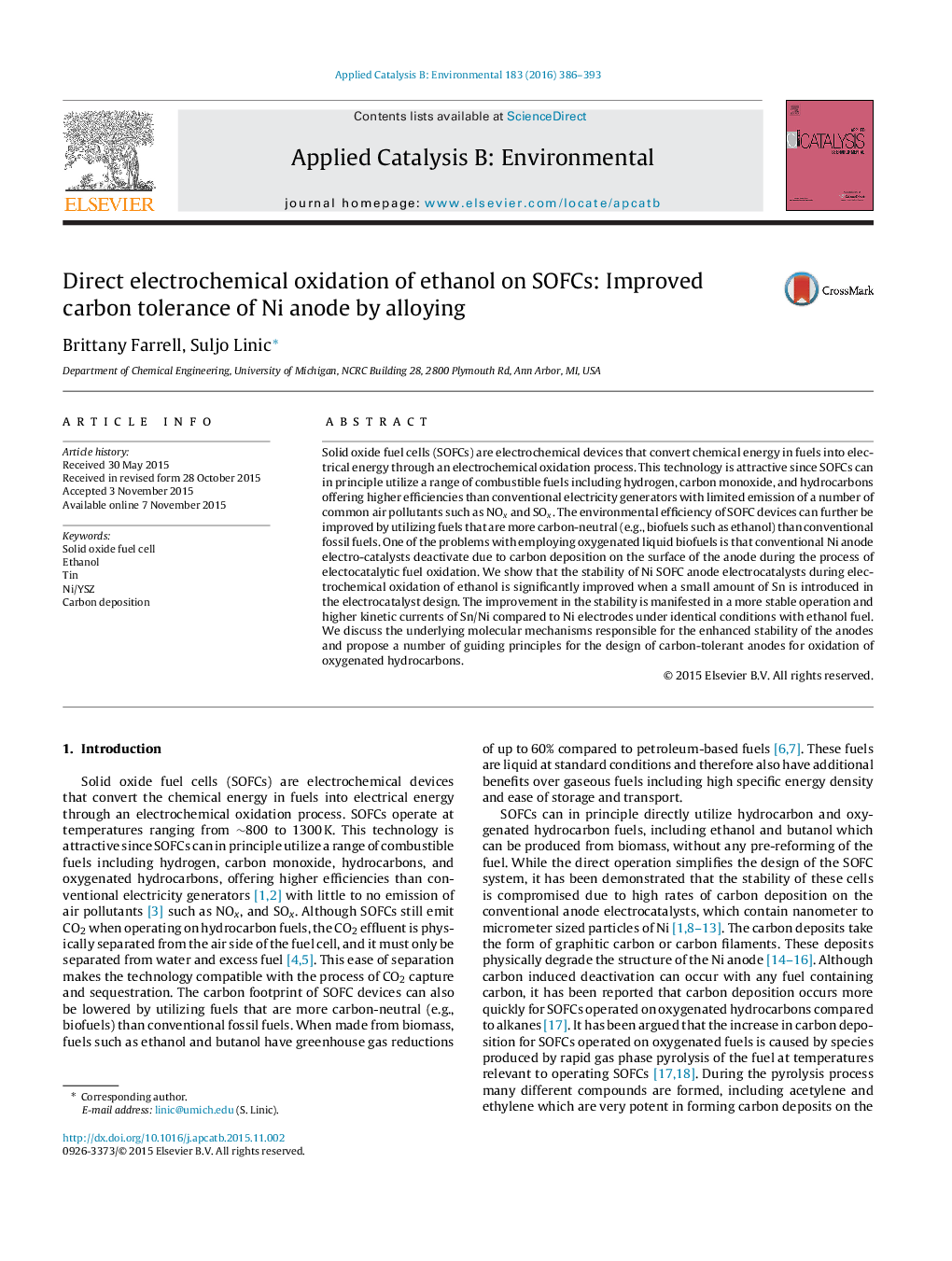| کد مقاله | کد نشریه | سال انتشار | مقاله انگلیسی | نسخه تمام متن |
|---|---|---|---|---|
| 45168 | 46401 | 2016 | 8 صفحه PDF | دانلود رایگان |

• Solid oxide fuel cells were operated directly on hydrogen and ethanol fuels.
• Carbon deposition was monitored both physically and electrochemically.
• Carbon deposition is decreased on fuel cells with 1% Sn/Ni alloy anodes.
• Severity of the C deposition is affected by the local C to O ratio in the fuel cell.
Solid oxide fuel cells (SOFCs) are electrochemical devices that convert chemical energy in fuels into electrical energy through an electrochemical oxidation process. This technology is attractive since SOFCs can in principle utilize a range of combustible fuels including hydrogen, carbon monoxide, and hydrocarbons offering higher efficiencies than conventional electricity generators with limited emission of a number of common air pollutants such as NOx and SOx. The environmental efficiency of SOFC devices can further be improved by utilizing fuels that are more carbon-neutral (e.g., biofuels such as ethanol) than conventional fossil fuels. One of the problems with employing oxygenated liquid biofuels is that conventional Ni anode electro-catalysts deactivate due to carbon deposition on the surface of the anode during the process of electocatalytic fuel oxidation. We show that the stability of Ni SOFC anode electrocatalysts during electrochemical oxidation of ethanol is significantly improved when a small amount of Sn is introduced in the electrocatalyst design. The improvement in the stability is manifested in a more stable operation and higher kinetic currents of Sn/Ni compared to Ni electrodes under identical conditions with ethanol fuel. We discuss the underlying molecular mechanisms responsible for the enhanced stability of the anodes and propose a number of guiding principles for the design of carbon-tolerant anodes for oxidation of oxygenated hydrocarbons.
Figure optionsDownload as PowerPoint slide
Journal: Applied Catalysis B: Environmental - Volume 183, April 2016, Pages 386–393